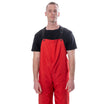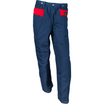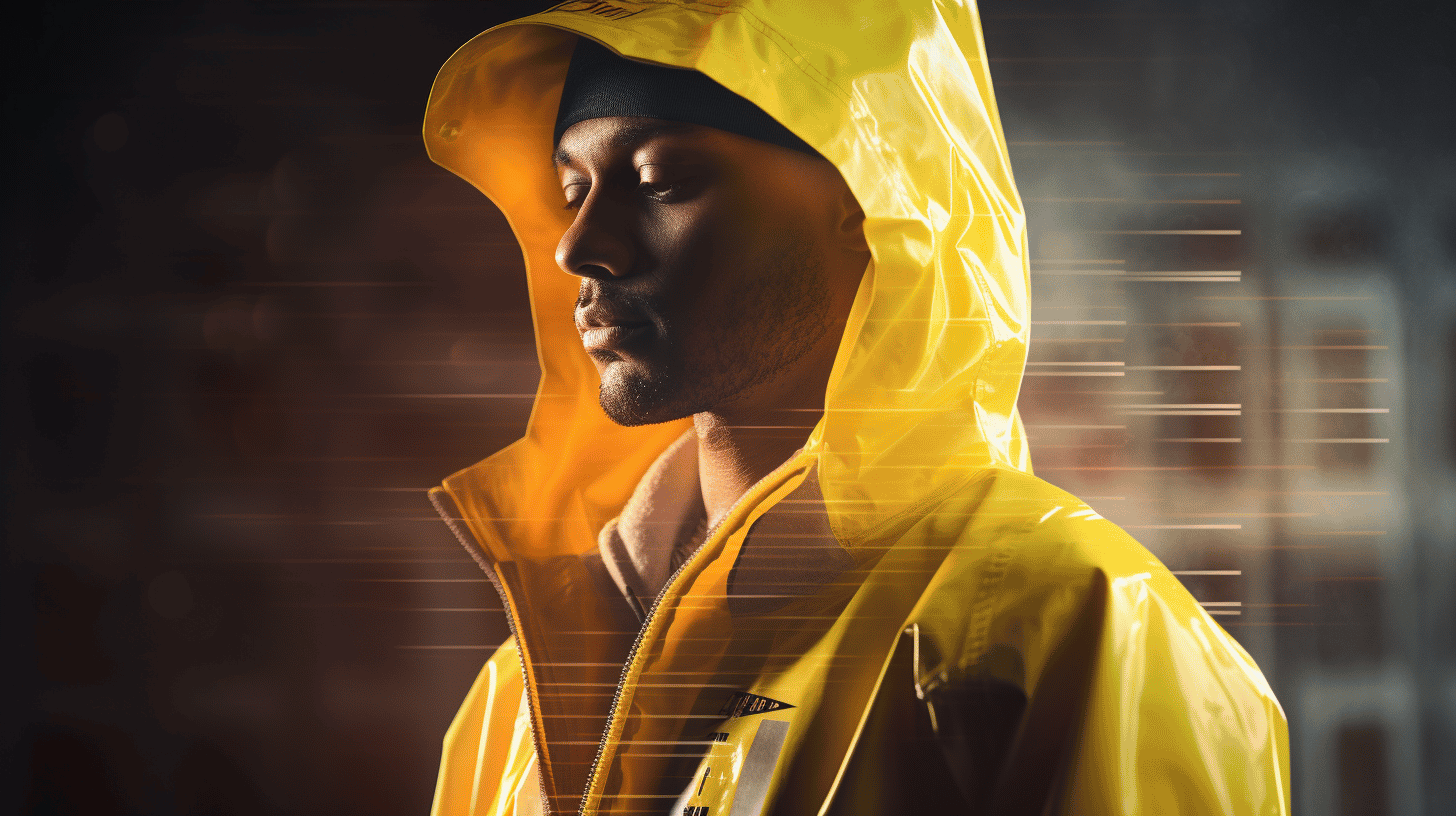Climate can wield a significant impact on a construction project's timeline, most especially, harsh rain conditions. Rainstorm incidents not only compromise daily productivity but can likewise expose workers to hazardous environments and challenging health scenarios. It's the very reason why choosing the right rain gear matters. Welcome to our comprehensive dive into the next-generation rain gear for construction workers. This article fills you in on the latest advancements in rainwear, highlights prominent brands in the market, and expounds on the importance of functional features in construction rainwear. We also reveal how the intersection of rain gear and technical features are shaping the future, along with the regulated standards for rainwear. Welcome to sparking the future of rain gear!
Modern Developments in Rainwear for Construction Workers
With progress taking place in every corner of the industry, modern rainwear has undergone significant advancements that subtly merge protection with comfort. This gear isn't just about staying dry anymore- it's about ensuring that workers remain safe and visible, even under tumultuous weather conditions.
Matrix Material: NASCO's ArcWear Line
NASCO's ArcWear Line is an excellent example of this fusion of protection and comfort. With an outer layer made of breathable nylon and polyester, ArcWear offers resiliency without compromising on conformity. It's professionally designed to defend against severe weather while still being lightweight and comfortable.
High-Visibility Rainwear for Safety and Visibility
Safety is the number one priority when it comes to construction work, and high-visibility rain jackets, suits, and coats have become a necessity on any construction site. Not only do they protect against the elements, but they also play a vital role in visually alerting others on-site to increase overall safety in wet, rainy conditions.
The Durability and Resistance of Work Rain Gear
Quality rain gear needs to be robust and durable, and modern materials support this need. Some work rain gear incorporates features such as polyester outer shells and synthetic insulation to withstand harsh working conditions. Force Extremes™ heavy rain gear provides waterproof breathable workwear for any job, a testament to the strides that manufacturers have taken to Invest in Rain Gear Durability.
Reflective Raincoats for Enhanced Visibility
Another critical development in rainwear is the use of reflective materials in the design of raincoats. Reflective rainwear considerably enhances visibility, particularly under poor lighting conditions, making it an excellent safety feature on construction sites. With reflective clothing, workers can be spotted from a significant distance, significantly reducing the potential for workplace accidents.
In the race to develop the finest rainwear for maximum comfort and protection, manufacturers and industry leaders continue to push the envelope. It is this drive for improvement that ensures construction workers the world over are equipped with the best gear to face any weather condition, head-on.
Prominent Rain Gear Brands in the Market
When you're caught in a downpour, there's nothing like quality rain gear to keep you dry and warm. Whether you're an outdoor enthusiast, a construction worker, or simply want to be able to walk the dog without getting drenched, the right rain gear can make all the difference. With so many brands on the market, it might be difficult to decide which is best for your needs. This guide will introduce you to some of the biggest names in rain gear – Helly Hansen, Stormline, Mountain Equipment Co-op's Deluge 3, and MCR Safety.
Helly Hansen: Harsh Environment Workwear Pioneer
Helly Hansen is a brand that has been a staple in harsh environment workwear since 1877. Known for its technical, high-performance gear, the subject of rain protection is one this brand has mastered. With a variety of options, like full-coverage rain boots to simple and efficient rain jackets, Helly Hansen equips its customers with the best tools to continue their work or outdoor adventures, no matter what the weather trumps up.
Stormline: Leading Wet Weather Gear Manufacturer
Born by the sea, Stormline has crafted industry-leading rain gear with the vision of helping people who face some of the world's toughest weather conditions. Whether it's for fishing, agriculture, or simply bracing a stormy day, Stormline's gear brings technical design and practicality together to create reliable solutions against heavy rain.
Mountain Equipment Co-op's Deluge 3 for Forestry
Mountain Equipment Co-op is renowned for creating outdoor gear that withstands the toughest of conditions. Their Deluge 3 rain gear, specifically designed for the wet environment of forestry work, stands out for its durability and effectiveness. Long hours in the rain are less daunting with Deluge 3 gear, making work or adventure in the great outdoors more enjoyable.
MCR Safety: Trusted Brand for Rain Gear
MCR Safety has earned its name as a trusted brand for safety and protective gear. Among its wide range of products, its rain gear line is worthy of mention for their premium quality and excellent coverage. Many professionals in the construction industry vouch for MCR Safety products when it comes to keeping dry during wet weather.
Regardless of your profession or hobby, it's crucial to be well-prepared for the unpredictable forces of nature. As we trace back the Evolution of Rain Gear, these brands have not only evolved alongside technological advancements but have also reshaped people's experiences in challenging environments. Investing in reliable rain gear from these brands will surely be a decision you won't regret.
The Importance of Function in Construction Rainwear
Imagine you're working on a construction site. It's pouring rain, and you've got a job to do. The challenge, however, lies in staying dry and safe while still delivering a high-caliber performance. This is where the crucial role of functional construction rainwear comes into the picture. A well-equipped worker is not just more productive but also safer. And safety should be the top priority in any work environment, especially in a high-risk industry like construction.
Personal Fall Protection Equipment
It's a well-known fact that construction work can sometimes entail height-related tasks. This is where Personal Fall Protection Equipment (PFPE) becomes vital. However, functionality should not be compromised even under rainy conditions. You might be wondering how you can combine safety, comfort, and efficacy. The key here is choosing PFPE that's adaptable in design and equipped with water-resistant features.
Here are some features to look for in rain-friendly PFPE:
- High Visibility: Construction rainwear should have reflective accents that maintain visibility even in heavy rain.
- Durable Material: The material should be sturdy and water-resistant, yet lightweight for ease of movement.
- Secure Fastenings: Reliable harnesses and lanyards should be included to prevent accidental slips and falls.
These features may seem trivial at first, but they add a significant layer of protection in an already hazardous profession.
Cooling Vests for Warm Climates
Dealing with rain is one thing, but what about when temperatures rise? Here's where cooling vests come into play. Staying cool in warm weather is crucial for productivity and health. Overheating can lead to serious health conditions including heat stroke. Again, the theme of functionality in construction rainwear arises.
A cooling vest's main function is to regulate body temperature and prevent overheating. Look for one that's made from breathable, moisture-wicking material. On top of that, it should fit comfortably under your rain gear without hampering your movement. Therefore, it's essential to consider these factors when choosing the right vest for you:
- Material: Opt for vests made from breathable materials for maximum comfort.
- Size: Ensure the vest fits comfortably without being overly tight or restrictive.
- Design: Choose a design that best suits your needs, such as ones with removable cooling packs for easy handling.
Construction safety is paramount, and this is aptly reflected in the design and functionality of personal protective equipment (PPE). Picking the correct construction rainwear is integral to maintaining safety standards, enhancing productivity, and ensuring comfort at work. Never compromise on functionality and remember - when it comes to PPE, the better the function, the better your performance and safety on site.
The Intersection of Rain Gear and Technical Features
In the world of outdoor wear, innovations are continuously shaping the landscape, aligning fashion with functionality. Particularly prevalent is the intersection of rain gear and technical features, where mundane weather protection acquires a rather fascinating twist. The quintessential example of this technological transformation can be seen in the 3-layer Gore-Tex construction which is used in some exceptional rain gear pieces, such as the 'Beta LT.'
3-Layer Gore-Tex Construction and ‘Beta LT'
The 3-Layer Gore-Tex construction is nothing short of ground-breaking. This cutting-edge technology presents a unique approach to keeping outdoor enthusiasts dry, even in the most inclement weather conditions. What this innovative construction delivers is a three-tiered fortress against moisture. The essential layers at work here include:
- The Gore-Tex Membrane at the core, waterproof and windproof, yet breathable
- An external layer designed for weather resistance, and
- An internal layer that enhances the overall comfort.
Representing the practical application of the 3-Layer Gore-Tex construction is the weightless yet resilient 'Beta LT.' This feature-rich jacket redefines the functionality of rain gear with its superior waterproof and windproof characteristics. Besides, its breathable nature ensures optimum comfort during various outdoor activities.
To elaborate, the 'Beta LT' integrates the 3-Layer Gore-Tex technology perfectly by incorporating the weather-resistant exterior and the comfortable trade-off of the breathable interior. This combination makes the 'Beta LT' a prominent figure in the sophisticated world of technical rain gear - a true stunt of modern design and professional performance.
In essence, the fusion of rain gear and technical features has transformed the way we perceive outdoor clothing. Technologies like the 3-Layer Gore-Tex construction have revamped the everyday utility items into pieces of advanced engineering, and wearables like the 'Beta LT' have set the bar high, with their unique style merged with breath-taking performance. The future of rain gear has never seemed brighter, or shall we say, drier.
Regulated Standards for Rain wear
Staying visible and dry is a major concern when working in rough weather conditions, especially if your work involves strategic operations that demand high visibility and durability. Workwear designed to resist rain, known as rain gear, has become a staple for many professions. But did you know there's more to selecting rain gear than just opting for the first waterproof piece you find at the store? It's crucial to understand the regulated standards for rain gear to secure the best protection.
ANSI-Tested and OSHA-Compliant Rain Gear
When it comes to rain gear, two regulated standards should be on your lookout - gear that is ANSI-tested and OSHA-compliant.
- The American National Standards Institute (ANSI) has specific regulations laid out for high-visibility safety apparel, including rain gear. The ANSI/ISEA 107-2015 Performance Class 3, for instance, is the highest level of visibility, providing visibility through more body coverage and featuring a unique design for superior standing out against complex backgrounds.
- The Occupational Safety and Health Administration (OSHA) further ensures the availability of safely designed rain gear for different work environments. According to OSHA regulations, employers are required to provide their workers with protective clothing whenever they are faced with poor weather conditions at work. This regulation enforces the need for weather-resistant gear, thereby increasing the demand for OSHA-compliant rain gear.
"Like any other piece of safety gear, rainwear should adhere to certain safety standards to ensure maximum protection."
Choosing ANSI-tested and OSHA-compliant rain gear not only fulfills legally mandated safety requirements but also guarantees a high level of protection and visibility, assuring you that your safety doesn't get compromised in severe weather conditions. When selecting rainwear, make sure to look for markings indicating that the product is compliant with these essential regulated standards.
Remember, while all of us may not work in weather-challenged environments, we surely gratify a sense of security when we know our protective clothing measures up to regulated standards. With ANSI and OSHA standards in view, you can navigate the myriad options of rain gear with more confidence and assurance. Evidently, the science of safety is not just about following rules; it's about securing maximum protection in the face of impending danger. With adequate and suitable rain gear, render the weather a non-issue and focus on what truly counts - your work!
Conclusion
As seen from the evidence presented, the advancements in rain gear technology over the years have significantly enhanced the safety and comfort of construction workers. The exceptional integration of functionality and technology in rainwear gives workers the power to face challenging weather conditions without compromising their performance.
With the multitude of high-quality brands in the market, choosing the right rain gear becomes easier than ever. However, one company that truly stands out when it comes to reliable, durable, and 100% waterproof rain gear is Rain Gear Pro. With their commitment to quality, comfort, and visibility, they ensure that you are well-equipped to face the toughest weather conditions while at work.
Whether it's about adhering to regulated standards or prioritizing features like reflective striping and breathable materials, the future of construction rainwear is brighter than ever. Hence, it's essential that we continue to embrace these developments and advancements, cultivating a safer and more efficient environment for construction workers worldwide.
Frequently Asked Questions
-
What are some features of next-generation rain gear for construction workers?
Next-generation rain gear for construction workers often includes features such as waterproof and breathable materials, reflective elements for enhanced visibility, adjustable cuffs and hoods, reinforced knee and elbow areas for durability, and multiple pockets for convenient storage.
-
How does next-generation rain gear benefit construction workers?
Next-generation rain gear offers improved protection against rain, wind, and other elements, keeping construction workers dry and comfortable on the job. The enhanced features also increase visibility and functionality, making the gear more practical and efficient to use.
-
Can next-generation rain gear be used in extreme weather conditions?
Yes, many next-generation rain gear options are designed to withstand extreme weather conditions. They are often built with durable and weather-resistant materials that provide excellent protection even in heavy rain, strong winds, and other challenging environments.
-
Are next-generation rain gear options available in various sizes?
Yes, most next-generation rain gear brands offer a wide range of sizes to accommodate different body types. It is important to check sizing charts and guidelines provided by the manufacturer to ensure a proper and comfortable fit.
-
Can next-generation rain gear be customized with company logos or branding?
Some manufacturers of next-generation rain gear offer customization options, allowing construction companies to add their logos or branding. Contact the manufacturer or check product specifications to see if customization is available.





















Leave a comment
This site is protected by hCaptcha and the hCaptcha Privacy Policy and Terms of Service apply.